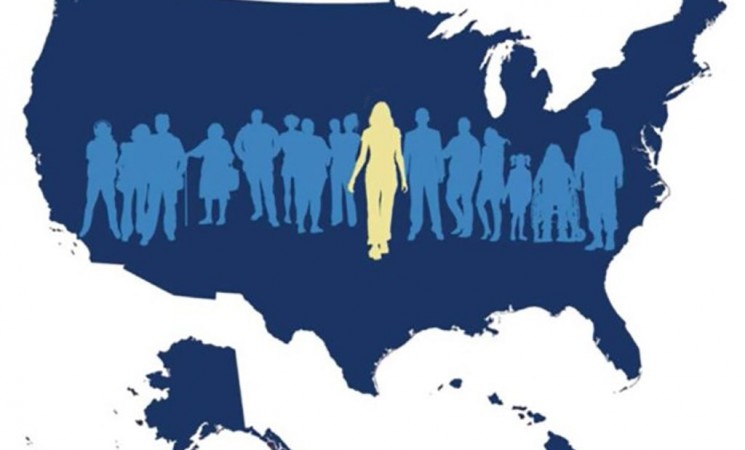Archived Content
This page is archived and provided for historical reference. The content is no longer being updated, and some of the information may have changed over time and could be outdated or inaccurate.

By Sarah Damaske, Ph.D.
While there have been sizable gains in women’s paid employment over the last thirty years, women’s employment rates remain uneven and some research suggests that employment rates have stalled in recent years. Diversity in women’s employment trends may reflect underlying inequalities between women, which led my co-author, Adrianne Frech, and I to ask two primary research questions: “What are the different ways that women participate in the workforce?” and “What variables best predict why some women participate steadily in full-time work while other women do not?” in our study recently published in Demography.
Women participate in the workforce in myriad ways
Using data from the National Longitudinal Survey of Youth (NLSY), we examine women’s work pathways over time from the age of 25 until 45—prime childbearing and childrearing ages as well as prime working years. We discovered that less than 10 percent of women stay at home from their mid-twenties into their forties, suggesting that long-term patterns of stay-at-home mothering are, perhaps, even less predominant than we once thought. Moreover, more than 60 percent of women worked at least 40 hours a week steadily through their 20s and 30s including a small group of women working over 50 hours a week steadily.
Why and how women’s work pathways differ from men’s
While women’s full-time employment remains lower than men’s, our findings suggest that a good majority of women spend their young to middle adulthood employed steadily full-time into middle-age. The remaining three groups suggest a sizable plurality (37.9 percent) of women have weaker labor force attachment than a fulltime worker through their mid-forties. A closer look reveals substantial variation in what this part-time or intermittent work looks like: A fourth pathway of work included one group of women with high levels of employment until their late twenties/early thirties who pulled back to almost no employment for a time (presumably when their children were quite young) and then re-entered work at close to full-time hours. A fifth pathway included those who delayed entrance into the workforce until their late twenties/early thirties and whose workforce participation rose steadily into their 40s. The sixth pathway appeared to be a reverse of this pattern—women who worked full time at first, but whose workforce participation declined in their late twenties/early thirties and then remained low into their 40s. These findings suggest that women’s workforce participation rates do remain quite diverse, even though a clear majority work full-time and steadily.
Pathways of women’s work pathways are complex, smooth, or potholed
As my prior work contends, there is a common misperception that women’s financial needs drive their workforce participation. Instead, our findings in the NLSY79 show that early socioeconomic advantages and disadvantages play an important part in shaping women’s work pathways, but not in the expected direction. In contrast to popular opinion, we found that women on Steady pathways were more advantaged both during their childhood and throughout young adulthood relative to the majority of their counterparts. Women who followed Overwork pathways also experienced early advantages, including higher education and lower poverty. In other words, women who had the fewest “needs” had the greatest access to continued full-time employment. And women with the greatest needs appeared to face the greatest barriers to continued full-time employment.
Women with fewest needs had greatest access to full-time employment
Racial and ethnic differences also shaped women’s employment pathways. Black and Latina women were more likely to work full-time than to follow two of the three intermittent pathways and the “re-entry” pathway—what we termed the pathway in which women work full-time, pull back to no work, and then return to full-time work. This re-entry pathway was almost exclusively followed by white women. This suggests that race intersects with gender and class to further shape women’s work.
Women with greatest needs face greater barriers to full-time employment
In the paper, we argue that our use of a life course framework allows for a better understanding of women’s work and provides substantial evidence that women’s work pathways are shaped by their likelihood to be poor, to face high unemployment when first entering the workforce, to have a mother with a lower level of education, to have attained relatively low education level for themselves, to aspire to a traditional division of household labor, and to report early barriers to good work. We contend that future research should further consider the interrelated nature of these variables and their linkages across the life course and to key transition points of employment, childbearing, childrearing, and marriage.
Women’s employment pathways reflect lifetime resources, experiences, social environments
In summary, our study provides evidence that women’s employment pathways are a product of both their resources as well as their social environment—including both their family and work circumstances and their gender beliefs. Women with greater advantages early in life seemed to be able to maintain steady workforce participation as well as to move in and out of the workforce easily, while those who grew up with more disadvantages found themselves with a greater risk of intermittent or no employment.
This work was published recently in the journal Demography and is supported by Population Research Institute, which is supported by an infrastructure grant by the NIH (2R24HD041025-11), and is part of the Social Science Research Institute at The Pennsylvania State University.
About the Author
 Dr. Sarah Damaske’s research focuses on how work and family transitions lead to cumulating inequalities over the life course. Dr. Damaske’s first book, “For the Family? How Class and Gender Shape Women's Work” (Oxford University Press, 2011), received awards from the National Women’s Studies Association and the North Central Sociological Association and was named one of the “most influential books published on the family since 2000” by Contemporary Sociology. She has published in numerous top sociology journals, including Demography, Gender & Society, Work and Occupations, Journal of Health and Social Behavior, Journal of Marriage and Family, Social Science & Medicine, and Social Science Research. There have been hundreds of media citations of her research, including multiple stories in the New York Times, the Washington Post, and NPR, as well as featured stories in the Wall Street Journal, ABC Nightly News, and the BBC.
Dr. Sarah Damaske’s research focuses on how work and family transitions lead to cumulating inequalities over the life course. Dr. Damaske’s first book, “For the Family? How Class and Gender Shape Women's Work” (Oxford University Press, 2011), received awards from the National Women’s Studies Association and the North Central Sociological Association and was named one of the “most influential books published on the family since 2000” by Contemporary Sociology. She has published in numerous top sociology journals, including Demography, Gender & Society, Work and Occupations, Journal of Health and Social Behavior, Journal of Marriage and Family, Social Science & Medicine, and Social Science Research. There have been hundreds of media citations of her research, including multiple stories in the New York Times, the Washington Post, and NPR, as well as featured stories in the Wall Street Journal, ABC Nightly News, and the BBC.
Dr. Damaske's faculty profile: http://lser.la.psu.edu/directory/sad32








